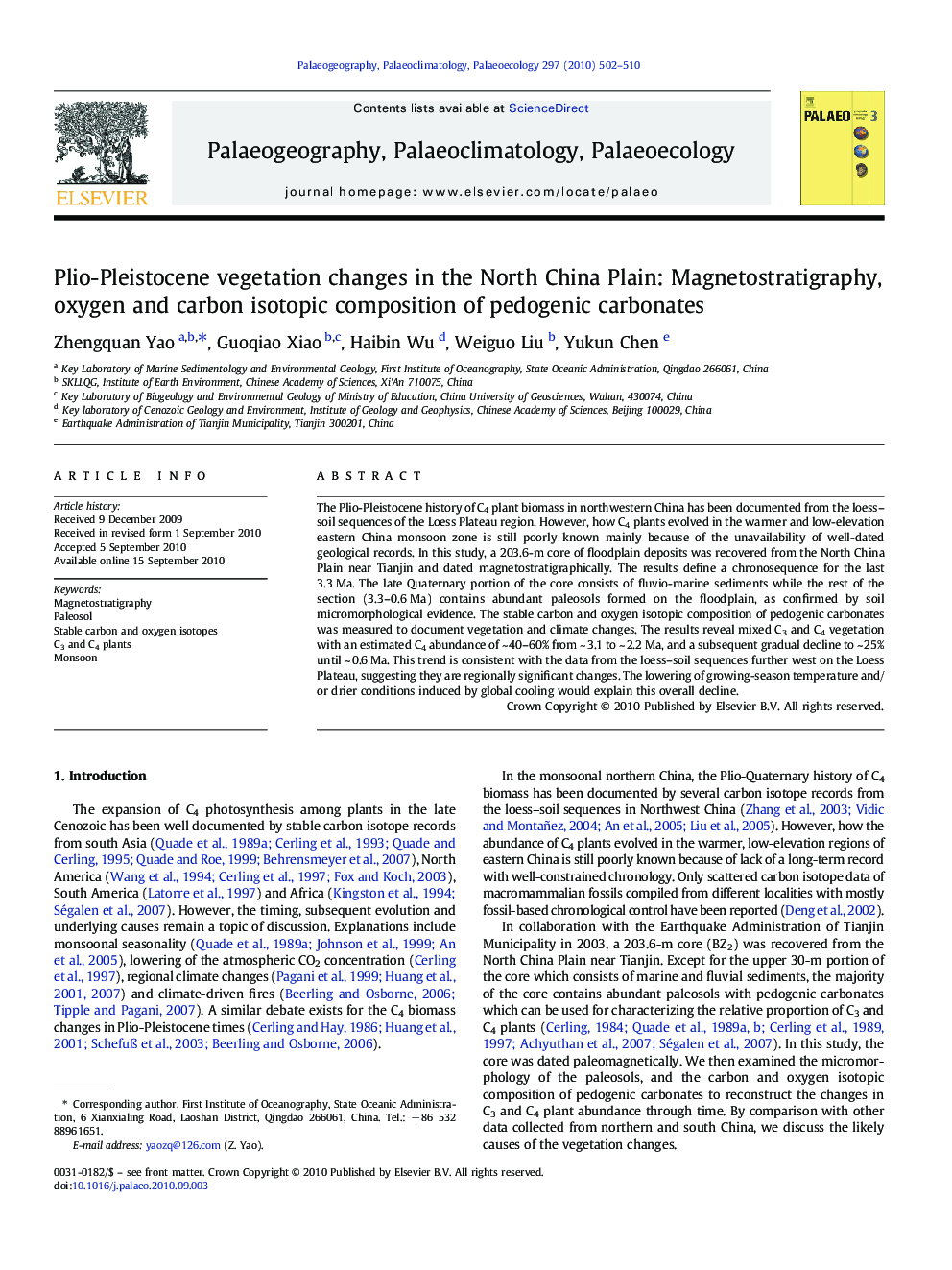| Article ID | Journal | Published Year | Pages | File Type |
|---|---|---|---|---|
| 4467493 | Palaeogeography, Palaeoclimatology, Palaeoecology | 2010 | 9 Pages |
The Plio-Pleistocene history of C4 plant biomass in northwestern China has been documented from the loess–soil sequences of the Loess Plateau region. However, how C4 plants evolved in the warmer and low-elevation eastern China monsoon zone is still poorly known mainly because of the unavailability of well-dated geological records. In this study, a 203.6-m core of floodplain deposits was recovered from the North China Plain near Tianjin and dated magnetostratigraphically. The results define a chronosequence for the last 3.3 Ma. The late Quaternary portion of the core consists of fluvio-marine sediments while the rest of the section (3.3–0.6 Ma) contains abundant paleosols formed on the floodplain, as confirmed by soil micromorphological evidence. The stable carbon and oxygen isotopic composition of pedogenic carbonates was measured to document vegetation and climate changes. The results reveal mixed C3 and C4 vegetation with an estimated C4 abundance of ~ 40–60% from ~ 3.1 to ~ 2.2 Ma, and a subsequent gradual decline to ~ 25% until ~ 0.6 Ma. This trend is consistent with the data from the loess–soil sequences further west on the Loess Plateau, suggesting they are regionally significant changes. The lowering of growing-season temperature and/or drier conditions induced by global cooling would explain this overall decline.
